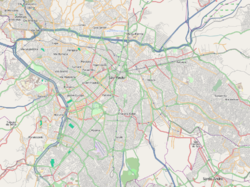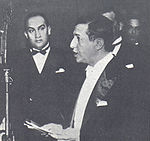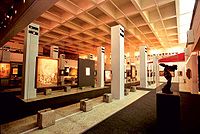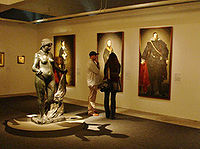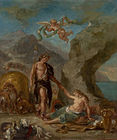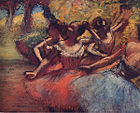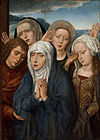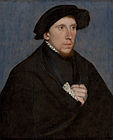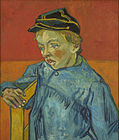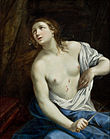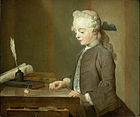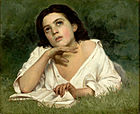- São Paulo Museum of Art
-
Coordinates: 23°33′40″S 46°39′21″W / 23.561111°S 46.655833°W
The São Paulo Museum of Art 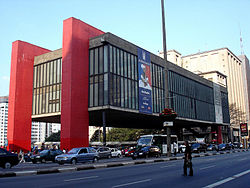
Established 1947 Location Avenida Paulista, São Paulo, Brazil Visitor figures 679,019[1] (2009) Director João Vicente de Azevedo Curator Teixeira Coelho Website www.masp.art.br The São Paulo Museum of Art (in Portuguese, Museu de Arte de São Paulo, or MASP) is an art museum located on Paulista Avenue in the city of São Paulo, Brazil.[2] It is well known for its headquarters, a 1968 concrete and glass structure designed by Lina Bo Bardi, whose main body is supported by two lateral beams over a 74 meters freestanding space, considered a landmark of the city and a main symbol of modern Brazilian architecture.[3]
The museum is a non-profit making private institution founded in 1947 by Assis Chateaubriand and Pietro Maria Bardi. MASP distinguished itself for many important initiatives concerning museology and art education in Brazil, as well as for its pioneering role as a cultural center.[4] It was also the first Brazilian museum interested in Post-World War II artistic tendencies.
The museum is internationally recognized for its collection of Western art, considered the finest in Latin America and all Southern Hemisphere.[3][5] It also shelters an emphatic assemblage of Brazilian art, prints and drawings, as well as smaller collections of African and Asian art, antiquities, decorative arts, and others, amounting to more than 8,000 pieces. MASP also has one of the largest art libraries in the country. The entire collection is listed as Brazilian National Heritage.[6]
Contents
History
General context
At the end of the 1940s, Brazilian economy was passing through large structural changes, consolidating the transition from the coffee cycle to a growing industrialization period. The state of São Paulo specifically was attracting many industries and workers from many regions of the country and the world, and the city of São Paulo, in particular, established itself as the most important industrial hub in the country.
Regarding the artistic life, however, São Paulo's most notable reference was still the Week of Modern Art of 1922. Despite the importance this event had enjoyed in the 1920s, Modernism wouldn't draw much attention of city dwellers and institutions in the following decades. There was only one art museum in São Paulo, the Pinacoteca do Estado, solely devoted to Academic art, besides a commercial gallery.
Assis Chateaubriand, founder and owner of Diários Associados, or "Associated Daily Press", the largest media and press conglomerate of Brazil at the time, was one of the most influential individuals of this period. Jockingly nicknamed "King of Brazil", he was a very active partaker in the national moves toward modernization. Backed by the power of his press conglomerate, Chateaubriand used to pressure Brazilian political and economical elite to help him in his "public campaigns". In the mid 1940s, Chateaubriand created the Campanha da Aviação ("aviation campaign"), which consisted of vigorous fundraising to acquire training aircraft, at the aim of endowing the country with a proper aviation system. As a result, more than one thousand aircrafts were donated to Brazilian aviation schools.
After the end of the Campanha da Aviação, Chateaubriand would start a new campaign, with the boldly intent of acquiring masterpieces to form an art collection of international standard in Brazil.[7] He intended to host the museum in Rio de Janeiro, but chose São Paulo where he believed it would be easier to gather the necessary funds, since this city was enjoying a very prosperous moment. At the same time, the European art market had been deeply influenced by the end of World War II, making it possible to acquire fine artworks for reasonable prices.
Chateaubriand would need the help of an expert in the selection of the artworks. With that purpose, he invited Pietro Maria Bardi, an Italian professor, critic and art dealer, former owner of galleries in Milan and Rome, to help him create a "Museum of Classical and Modern Art". Bardi objected that there shouldn't be distinctions among arts, proposing simply a "Museum of Art", and accepted the invitation.[8] Planning to lead the project for only a year, Bardi would dedicate the rest of his life to it. He moved to Brazil together with his wife, the architect Lina Bo Bardi, and brought along his library and his private art collection.
The first steps (1947-1957)
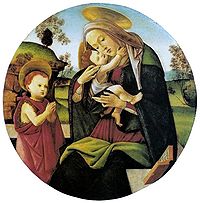 Sandro Botticelli (Italian, 1445-1510). Virgin and Child with the Infant St. John the Baptist, 1490/1500. Tempera on panel, diameter 74 cm.
Sandro Botticelli (Italian, 1445-1510). Virgin and Child with the Infant St. John the Baptist, 1490/1500. Tempera on panel, diameter 74 cm.
 François Clouet (French, 1510-1572). The Bath of Diana, 1559/60. Oil on wood, 78 x 110 cm.
François Clouet (French, 1510-1572). The Bath of Diana, 1559/60. Oil on wood, 78 x 110 cm.
The museum was inaugurated and opened to public visitation on October 2, 1947, displaying the first acquisitions, amongst which canvases by Picasso and Rembrandt. In these first years of activity, the museum was located on the first floor of the Diarios Associados headquarters. Lina Bo Bardi was in charge of adapting the building to the needs of the museum, dividing it into four distinct areas: art gallery, a didactic exposition room about history of art, temporary exhibition room and an auditorium. MASP was the first Brazilian institution interested in acquiring works of modern art. The museum would quickly become a meeting point for artists, students and intellectuals, attracted not only by its holdings, but also because of the workshops and courses about history of art, temporary exhibitions of national and foreigner artists, and the educative program, open to receive manifestations of multiple fields of art, such as theater, cinema and music.
In the 1950s the museum increased its didactic performance, creating the Institute of Contemporary Art (offering workshops of engraving, drawing, painting, sculpture, dance and industrial design), the Publicity School (presently Superior School of Propaganda and Marketing), organizing debates about cinema and literature and creating a juvenile orchestra and a ballet company. The courses were frequently given by important names of the Brazilian artistic scene, such as the painters Lasar Segall and Roberto Sambonet, the architects Gian Carlo Palanti and Lina Bo Bardi, the sculptor August Zamoyski, and the motion-picture technician Alberto Cavalcanti.
Along with the amplification of the educational program, the museum witnessed the growth in importance of its collection and the international recognition of the institution. Between 1953 and 1957, a selection of 100 masterpieces of the museum's collection traveled throughout European museums, such as Musée de l'Orangerie (Paris) and the Tate Gallery (London), in a series of exhibitions organized with the intent of consolidating the collection. In 1957, the collection was also displayed in the United States, at the Metropolitan Museum of Art in New York and in the Toledo Museum of Art. The following year, the holdings of MASP were exhibited at other Brazilian venues, such as the Museu Nacional de Belas Artes, in Rio de Janeiro.
The high-level of art excellence of its exhibitions promoted the museum those first years. Great notoriety and prestige were the results, which increased attendance and greater interest in fine arts.
Consolidation of the museum
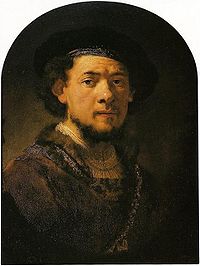 Attributed to Rembrandt (Dutch, 1606-1669). Portrait of a Young Man with a Golden Chain, c. 1635. Oil on panel, 57 x 44 cm.
Attributed to Rembrandt (Dutch, 1606-1669). Portrait of a Young Man with a Golden Chain, c. 1635. Oil on panel, 57 x 44 cm.
The collection's rising amount and importance soon required the construction of a building to headquarter the museum. With that purpose, the São Paulo City Hall donated a plot of ground, previously occupied by the Belvedere Trianon – a traditional meeting point of the Paulistano wealthy, which had been demolished in 1951 - to host the first edition of São Paulo Art Biennial. The ground on Paulista Avenue had been donated to the City Hall with the condition that the view to the downtown area and the valley of the Nove de Julho Avenue be preserved.
The new MASP building is the brainchild of Lina Bo Bardi. In order to preserve the required view of the downtown area, Bardi idealized a sustained building, supported by four massive concrete plain rectangular columns. The construction is considered to be unique worldwide for its peculiarity: the main body of the building stands on four lateral supporting pillars, generating a free area of 74 meters underneath the sustained building. Constructed between 1956 and 1968, the new site of the museum was inaugurated on November 7 by Queen Elizabeth II of the United Kingdom during her visit to Brazil.
Assis Chateaubriand would not get to see the inauguration of the new building. He died months before, victimized by thrombosis. The media empire which he raised had also been facing difficulties since the beginning of the 1960s. Growing debts and the competition in the media market by Roberto Marinho's press conglomerate – caused the scarcity of the funds which had permitted the gathering of the collection.
The overthrow of Diários Associados and the death of its founder made public funds to intervene and pay for the debts contracted with foreign institutions. During the government of president Juscelino Kubitschek, Caixa Econômica Federal granted a loan to honor the financial obligations of the institutions and secured the loan with its art collections. Years later, in the 1970s, the debt with the Brazilian government was negotiated and finally paid off.
In 1969, in response to a request by the museum, the Brazilian Institute for Historic and Artistic Heritage (IPHAN) registered MASP's holdings as part of the national heritage. Then, the collection became inalienable. It is part of Brazilian public patrimony, and any movement of works of the collection to outside of the country needs the authorization by IPHAN.
Notwithstanding the financial problems of the institution, São Paulo Museum of Art undergoes an even greater growing of its international recognizing. In the 1970s the museum gathered notoriety in the Eastern Hemisphere by organizing many exhibitions using selected works of its collection at Japanese museums. In 1973, the collection was presented at the Ministry of Foreign Relations in Brasília. MASP's collection was presented again in Japan in 1978/79, 1982/83, 1990/91, and 1995. In 1992, works of the French school and Brazilian landscapes were exhibited in the Museo Nacional de Bellas Artes, in Santiago, Chile, and in the Biblioteca Luís Angel Aragón, in Bogotá.
In 2011, MASP received an important donation of Asian Art and artcrafts from Ambassador Godoy to India, which is said to have placed MASP under the same category of the Metropolitan Museum of Art of New York, which houses items of anthropological interest as well as fine arts. Before that, MASP already figured amongst the 19 finest institutions of art in the world, which include D'Orsay in Paris and the Met itself. A new wing to harbor the collection will be dedicated in 2012 when MASP's restaurant and offices will be transferred to a building under restoration to its left.
The building
The present building of the museum was constructed by the São Paulo City Hall and inaugurated in 1968, with the presence of Queen Elizabeth II of the United Kingdom. It is famous for is remarkable brutalist structure and it is considered one of the landmarks of the Brazilian modern architecture. The building should be raised in the formerly site of Belvedere Trianon, on Paulista Avenue from where it would be possible to watch the downtown area and the Cantareira Mountains. Joaquim Eugênio de Lima, the engineer who donated the plot of ground to the City Hall, tied the donation to an express commitment that no edification should ever be constructed in that plot that would harm the amplitude of the view. Therefore, the project demanded an underground construction or, otherwise, a sustained one. The architect Lina Bo Bardi and engineer José Carlos Figueiredo Ferraz chose both alternatives. They conceived an underground block as well as a sustained structure, which would stand eight meters above the floor, with the use of four pillars connected by two huge concrete beams. Underneath those beams there lay what was considered a boldness, meaning a free space of 74 meters between the pillars and underneath the beams; the largest in the world at that time.[9] The building inaugurated the so called protented technique reinforced concrete in Brazil.
In the construction of approximately 10,000 sq. meters there are - besides the permanent and temporary exhibition rooms – library, photo gallery, film gallery, video gallery, two auditoriums, restaurant, a store, workshop rooms, administrative offices and a technical reserved area. The building's installations and finishing are homely, as Lina Bo herself describes: "Concrete in sight, whitewash, flagstone flooring covering the great Civic Hall, tempered glass, plastic walls. Industrial black rubber flooring covering inner spaces. The belvedere is a ‘square’, with plants and flowers around, paved with parallelepipeds, according to Iberian-Brazilian tradition. There are also water spaces, small water mirrors with aquatic plants.[10] […] I didn’t search for beauty. I’ve searched for freedom".[11] In 2003, the building was also registered as national patrimony by Brazilian Institute for Historic and Artistic Heritage.
In the museographic area, Lina Bo Bardi also innovated by using tempered crystal sheets leaned on concrete blocks bases as display supports for the paintings. The intention is to imitate the position of the canvas on the painter's easel. In the reverse of these supports, which are not used anymore, there were planks with information about the painter and the work. Paradoxically, the museum abandoned this model of exhibition at the same time when, at the end of the 1990s, it starts to be noticed and implemented by foreigner institutions.
Between 1996 and 2001, the actual administration of the museum undertook a vast and controversy reform. Notwithstanding the indispensable restoration of the general structure, the architect and former director of the institution Julio Neves determined the substitution of the original floor conceived by Lina Bo, the installation of a second elevator, the construction of a third underground floor, and the substitution of the water mirrors for gardens. Many architects allege that the reform caused a profound discharacterization of Lina's original project.[12]
The collection
The formation of the collection
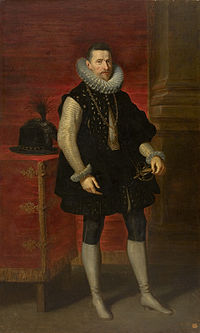 Peter Paul Rubens (Flemish, 1577-1640). Portrait of Albert VII, Archduke of Austria, c. 1615/32. Oil on canvas, 200 x 118 cm.
Peter Paul Rubens (Flemish, 1577-1640). Portrait of Albert VII, Archduke of Austria, c. 1615/32. Oil on canvas, 200 x 118 cm.
The main body of the collection was gathered between 1947 and 1960. Pietro Maria Bardi, formerly owner of commercial galleries in Milan and Rome, was in charge of searching and selecting the works which should be acquired, while Chateaubriand had to look for donors and patrons who shared his dream of endowing the country with a museum of international standard. Although many spontaneous donations had been registered, Chateaubriand gained reputation for using bold methods of persuasion. Endorsed by the influence of his Diários Associados Press, he negotiated with announcers his gathering of funds. After that, he rewarded the donors with the title of patrons, celebrating each new acquisition with banquets, speeches and even student parades in the streets of São Paulo, as happened at the arrival of Van Gogh's The Student.
The international art market was passing through a propitious moment for those who had funds to acquire high-quality works of art – there were many of them available in view of the end of the war, and Brazil enjoyed prosperity, having ceased to depend heavily on international production,as it was forced to develop its own industry during the war. The works of art were generally acquired in traditional and esteemed fine art auction houses, such as Christie's, Marlborough, Sotheby's, Knoedler, Seligman and Wildenstein.
The bold methods used by Chateaubriand to finance the formation of the collection produced many critics. Along with these, there were others related to the fact that the museum acquired works of art without the proper corroboration of authenticity. This impression was endorsed by the fact that the museum was at the time one of the major buyers in the international market. Unlike other institutions, whose acquisitions depended on approval of a curators council, the São Paulo Museum of Art usually acquired its pieces quickly, sometimes by telegram. Thanks to this agility the museum was able to gather important masterpieces, even when facing private collectors or institutions of major renown and bigger financial resources.
 Francisco Goya (Spanish, 1746-1828). Portrait of Cardinal Luis María de Borbón y Vallabriga, c. 1798/1800. Oil on canvas, 200 x 106 cm.
Francisco Goya (Spanish, 1746-1828). Portrait of Cardinal Luis María de Borbón y Vallabriga, c. 1798/1800. Oil on canvas, 200 x 106 cm.
At the end of the 1960s, Chateaubriand's press conglomerate was facing troubles, with growing debts and Roberto Marinho's media companies competition. The financial difficulties of Diários Associados caused the downfall of the museum's financial resources. Thus, after 13 years of great acquisitions, the museum increased its collection only by spontaneous donations of artists, companies and private collectors.
Overview of the collection
The São Paulo Museum of Art collection is considered the largest and more comprehensive collection of Western art in Latin America and all Southern Hemisphere. Among the 8,000 works of the museum, the collection of European paintings, sculptures, drawings, engravings, and decorative arts stands out. The French and Italian schools are more broadly represented, forming the main body of the collection, followed by Spanish, Portuguese, Flemish, Dutch, English and German masters. The museum also keeps a significant collection of Brazilian art and Brasiliana, which witnesses the development of Brazilian art from 17th century to nowadays. Still in the context of Western art, the museum possesses important holdings of Latin and North American art. In a smaller scale, the museum's holdings contemplate representative objects of many periods and distinct non-Western civilizations – such as African and Asian arts – and others which stand out for their archaeological, historic and artistic relevance, like the select collections of Egyptian, Etruscan, Greek and Roman antiquities, besides other artifacts of Pre-Columbian cultures and medieval European art.
Highlights
- Italian School: Raphael, Botticelli, Mantegna, Giovanni Bellini, Titian, Tintoretto, Perugino, Piero di Cosimo, Guido Reni, Guercino.
- French School: François Clouet, Poussin, Nattier, Delacroix, Courbet, Manet, Monet, Renoir, Degas, Cézanne, Van Gogh, Toulouse-Lautrec.
- Flemish, Dutch and German Schools: Hieronymus Bosch, Memling, Cranach, Quentin Matsys, Peter Paul Rubens, Rembrandt, Frans Hals, Anthony van Dyck, Jan van Dornicke.
- English School: Reynolds, Romney, Constable, Gainsborough, Turner.
- Modern and Contemporary Art: Picasso, Leger, Modigliani, Matisse, Chagall, Max Ernst, Salvador Dalí, Joan Miró, Andy Warhol, Jim Dine.
- Brazilian Art: Frans Post, Nicolas Antoine Taunay, Tarsila do Amaral, Candido Portinari, Di Cavalcanti, Anita Malfatti, Lasar Segall.
- Latin and North American Art: Torres Garcia, Diego Rivera, Siqueiros, Calder, Gilbert Stuart
The museum also has some small collections of photographs, costumes and textiles, kitsch objects, etc.
Theft
First attempt
On October 29, 2007, two men overpowered security officers and tried to reach the second floor of the museum, where the desired paintings were located. Both men ran away without taking anything.
Second attempt
On December 20, 2007, around 5:00 in the morning, three men invaded the museum and took two paintings, considered to be among the most valuable of the museum: O lavrador de café,[13] by Cândido Portinari, and the Portrait of Suzanne Bloch by Pablo Picasso. The whole action took about three minutes.
The estimated value of the paintings is around R$120 million reais (approximately 70 million dollars). The museum collection is uninsured and, at the time of the robbery, it had no movement sensors among the galleries. Security cameras could only produce unclear images of the raid because they lacked infrared capability.
The pictures were recovered by the police of São Paulo on January 8, 2008, in the city of Ferraz de Vasconcelos, in the Greater São Paulo. The names of the two suspects have been withheld. After the incident, the director of the MASP promised to improve the security of the museum.[14]
Gallery
-
Pietro Perugino (Italian, 1447/49-1523) St. Sebastian bound to a column, c.1500/10.
-
Titian (Italian, 1488/90-1576) Portrait of Cardinal Cristoforo Madruzzo, 1552.
-
Tintoretto (Italian, 1518-1594) Pietà, 1560/65.
-
Velázquez (Spanish, 1599-1660) Portrait of the Count-Duke of Olivares, 1624.
-
Delacroix (French, 1798-1863) The autumn - Bacchus and Ariadne, 1856/63.
-
Hans Memling (German, 1435-1494) The mourning Virgem with St. John the Baptist and the pious women of Galilee, 1485/90.
-
Hans Holbein (German, 1497-1543) The poet Henry Howard, Count of Surrey, c. 1542.
-
Thomas Lawrence (British, 1769-1830) The sons of Sir Samuel Fludyer, 1806.
-
Guido Reni (1575-1642). The Suicide of Lucretia, 1625-40.
-
Victor Meirelles (1832-1903). Moema, 1866.
See also
- Pinacoteca do Estado de São Paulo
- Ema Gordon Klabin Cultural Foundation
- Eva Klabin Foundation
- Museu Nacional de Belas Artes
References
- ^ (Portuguese)Abos, Marcia. O Globo. Retrieved on 2007-6-26.
- ^ Authorities seek shut-down of renowned São Paulo art museum, CBCNews, 2008-01-19, http://www.cbc.ca/arts/artdesign/story/2008/01/19/saopaulo-museum-court.html, retrieved 2009-06-25
- ^ a b São Paulo Museum of Art, Encyclopaedia Itaú Cultural Visual Arts, http://www.itaucultural.org.br/aplicexternas/enciclopedia_ic/index.cfm?fuseaction=marcos_texto_ing&cd_verbete=4111&cd_item=10&cd_idioma=28556, retrieved 2009-06-25
- ^ (Portuguese) Preciosidades de um MASP sessentão, Hipermeios, http://www.hipermeios.com.br/spip.php?article59, retrieved 2009-06-25[dead link]
- ^ (Portuguese) O Masp pede socorro, Forum Permanente, http://forumpermanente.incubadora.fapesp.br/portal/.imprensa/veja_sp, retrieved 2009-06-25
- ^ (Portuguese) IPHAN - Official note, IPHAN, http://www.cultura.gov.br/site/2007/12/21/assalto-ao-masp/, retrieved 2009-06-25
- ^ Bardi, P.M. (1992), História do MASP, São Paulo: Instituto Quadrante, pp. 10–14, ISBN 857234019X
- ^ (Portuguese) MASP - Um museu no país das idéias audazes, Instituto Lina Bo e P.M. Bardi, http://www.institutobardi.com.br/bardi/masp/index.html, retrieved 2009-06-25
- ^ Maciel, Carlos Alberto. Técnica moderna: entre o monumento e a construção cotidiana. Retrieved on 2007-6-26.
- ^ CEDAC. São Paulo 450 anos. Retrieved on 2007-6-26.
- ^ Oliveira, Fernanda. MASP: sob as linhas da arte, a liberdade. Retrieved on 2007-6-26.
- ^ João Domingues (2004-10-28). "MASP pede socorro!" (in Portuguese). Canal Contemporâneo. http://www.canalcontemporaneo.art.br/brasa/archives/000307.html. Retrieved 2007-06-26.
- ^ http://ritualcafe.files.wordpress.com/2007/07/lavrador-de-cafe.jpg
- ^ Picasso stolen from museum with no alarm - Reuters
External links
São Paulo Museum of Art • São Paulo Cathedral • Edifício Itália • Paulista Avenue • Octávio Frias de Oliveira Bridge • Altino Arantes Building • Rua Oscar Freire • Praça da Sé • Central Zone São Paulo • Ibirapuera Park • Ibirapuera Auditorium • Liberdade • Obelisk of São Paulo • Anhembi Convention Center • Luz Station • Martinelli Building • Edifício Copan • Museu Paulista • Museum of the Portuguese Language • Pinacoteca do Estado de São Paulo • Estádio do Morumbi • Estádio do Pacaembu • Brooklin • Jardins • Vila Olímpia • Municipal Theatre of São Paulo
 Categories:
Categories:- Art museums and galleries in Brazil
- Museums in São Paulo (city)
- Museums established in 1947
Wikimedia Foundation. 2010.

